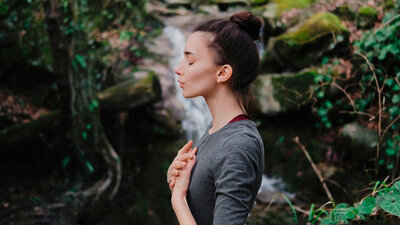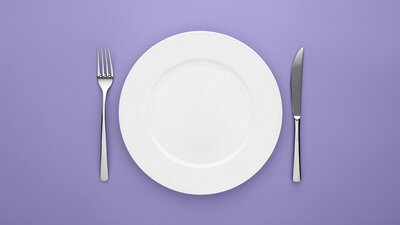The Dark and the Bright Side of the Sun - Sun Protection: Now!
A day by the sea. Just five words, and bright sunny images appear in our head. Images of sand and the beach. The smell of the sea. The ghost of holidays past. However: Summer is never as perfect as it is in our day dreams. Unbearable heat is just one keyword of many.
Most people have presumably adapted their behaviour to the new summer, the summer of climate change. Whereas it was almost a status symbol in the 1950s to return heavily tanned after several sunburns from two weeks in Rimini, Italy, nowadays many people use sun protection with a factor of 50+ even under a parasol.
UV radiation is increasing
And that is a good thing, as the situation is noticeably getting worse: ‘The number of annual hours of sun in Germany has increased on average by 132 hours between 1951 and 2021. And the number of days with 25 degrees centigrade and more has also increased’, says Dr Cornelia Baldermann of the Federal Office for Radiation Protection (BfS). And that has an impact: ‘The people go outside more often, and thus could be subjected to more UV radiation than before.’ Baldermann – as an employee of the Federal Office for Radiation Protection – is an advisor to the German government.
The urge for light, warmth, fresh open air, exercise and Mother Nature is totally understandable. Especially after the long and dark winter months in our latitudes. And it is healthy, in many aspects. The human organism follows the rhythm of bright and dark. Sunlight has an impact, for example, on how well we sleep, on our ability to concentrate, on the levels of pain we suffer, and whether we sink into a depression or not.
But: Our environmental circumstances are changing so rapidly at the moment that we are unable to adjust our behaviour. ‘UV protection has become more important for many people’, says Professor Carola Berking, director of the Department of Dermatology at the University Hospital Erlangen and deputy chairperson of the Working Group Dermatological Oncology (ADO). But that is not enough. ‘The number of skin cancer case in Germany has been increasing for decades’, she explains. Currently, about 220,000 men and women are currently diagnosed with the disease every year. Many skin tumours and their preliminary stages might be successfully treatable nowadays. However, the treatment is a mental strain, and also physically challenging.
Black cancer - the big danger
Black cancer is particularly critical: the malignant melanoma. The earlier it is diagnosed, the better the chances of a cure. But that can prove difficult: ‘For 20- to 30-year-olds, the melanoma is the most common type of cancer’, Berking explains. But it hits people at an age when they don’t really think about a disease of that magnitude. Some health insurers therefore offer early detection examinations for skin cancer – the so-called skin cancer screening – from birth onwards. But that is by no means standard.
And even a lot of people from 35 years onwards, who are certainly entitled to the screening, don’t take advantage of the examination offered by certified general practitioners or dermatologists. A poll taken by a big health insurer has recently revealed that 28 percent of this age group have never availed of the offer.
Ultraviolet light is also suspected to cause malignant tumours in the eyes – choroidal melanoma. On top of that, UV radiation can cause infections of the conjunctiva, the cornea and retinal disease. One such disease, macular degeneration, can lead to blindness. Certainly, UV radiation is co-responsible for cataracts, a clouding of the lens already affecting every second person living in Germany between the age of 52 and 64. Every year, cataracts cause 700,000 to 800,000 eye surgeries.
There are many reasons why our individual attempts at UV protection often fail. ‘Low ozone events cause a high UV intensity in Germany as early as March or April, when we desperately need sun protection’, says Baldermann. Low ozone events are nothing but ozone-depleted air masses. The ozone layer blocks out a part of the UV-B radiation emitted by the sun. The less ozone there is, the more radiation reaches the ground. ‘We will probably have even more low ozone events in the near future’, Baldermann adds.
How to protect yourself
How can we protect ourselves? ‘Quite simply’, the expert says. ‘One should take care of sun protection even more and adjust one’s everyday life to the UV intensity. We should have a scoreboard with the up-to-date UV index on every public square, in every kindergarden, for every outdoor workplace, that means everywhere.’
The UV index is the measure of the strongest UV intensity on any given day. If we all knew the UV index, we could plan our protection measures in the same natural way we plan our outfit according to the weather report. To prevent harm to our skin, UV protection is necessary from an index of 3 upwards. Higher up in the south German mountain regions, we often see summer levels of up to 11.
However, UV index scoreboards are quite rare in our public space. Just like canvas awnings to put pedestrian areas in the shade. Or trees. Such measures are called ‘structural prevention’ by city planners. The idea behind it is to protect the whole population from the sun, and not just those citizens aware enough to take care of themselves. Or lucky enough to live in a well-shaded environment.
‘But Germany is only just beginning to develop pilot project’, says Baldermann. So, for the time being, we have to look out for ourselves. Research has produced two pretty relevant insights. Firstly, ‘the skin never forgets’, says dermatologist Carola Berking. Which means that all UV damage adds up – until a threshold is reached where a disease begins to show. Secondly: It is never too late to benefit from sun protection. Ideally, however, we should try to avoid all sunburns, however minor or light, because the risk of skin cancer correlates with the amount and severity of all sunburns.
Infants and small children require particularly careful protection. Their skin and eyes are more susceptible to UV impact than those of adults. Kids under the age of one should never be directly in the sun. Otherwise, parents should consult their paediatrician or pharmacist for advise on age-appropriate sunscreen agents and UV protective clothing.
What is true for young and old alike: ‘Sunscreen agents are always just complementary to other measures’, Berking emphasises. Most important are appropriate headgear and UV resistant clothing protecting arms, legs, feet and so-called ‘sun balconies’ like ears. High-quality sunglasses are equally necessary. ‘Very important: Avoid the midday sun between 11 a.m. and 3 p.m.’, radiation expert Cornelia Baldermann adds. Delicate skin is otherwise harmed despite agents with a very high sun protection factor.
No one solution for all
‘Not one product blocks out all UV radiation’, she explains. To fully benefit from the sun protection factor advertised on the packaging, you need to apply two milligrams of lotion to every square centimetre of skin. That would imply that a bottle with 200 millilitres of lotion would be gone after six applications. ‘That is hardly manageable’, says Baldermann. ‘The real sun protection is always lower than the theoretical one.’
That also explains why good sun protection is no threat to your vitamin D levels – as it is sometimes claimed. Of course it’s true that the body can only produce vitamin D itself if the skin is subjected to some UV radiation. And it is also true that vitamin D is needed for various central functions of the body. Healthy bones are only one example.
But we also know that – according to up-to-date research – it is enough to subject face, hands and arms to half the UV dose that would produce a sunburn two to three times a week to generate sufficient vitamin D synthesis. ‘That is half the time it takes for the skin to redden’, Baldermann explains. The relevant time span is different for everybody: For people with a bright skin type, enough vitamin D is generated within minutes during the summer months. Experts and government agencies concerned with radiation protection, health, risk assessment, medicine and trophology have come up with that advise after assessing numerous studies on the subject.
Changes for the future
So, are we still disciples of the sun in the days of climate change? But of course! We should only take better care of ourselves now than we did before. A survey taken by a big health insurer ought to be a warning to us all: Currently, 40 percent of those queried get a sunburn once or even a few times a year.
A better way would be to access information on the UV index, for example on the website of the Federal Office for Radiation Protection (BfS). Instead of leaving an old and smelly tube of sunscreen hidden in our cupboard, we should buy a product that feels (and smells) good, so that we like to put it on regularly and in the appropriate amount. And instead of waiting for a roof over our bus shelter to be built, we should finally buy that sunhat.
Radiant lividity has surpassed the leathery tan of the 1950s as the ideal of beauty in many places. Australia – of all places – has become a model of positive, yet healthy dealings with the sun. Sporty types party on the beach, celebrate the summer, surf, kite, and swim – and naturally wear a so-called rashguard, a special UV resistant type of sports gear. From Japan, we hear of ‘higasa danshi’ – men carrying an ombrelle when leaving the house. It used to be only women doing that, but since the extreme heatwave of 2018, men have conquered that useful fashion accessory.






